
The Cyperaceae are a family of graminoid (grass-like), monocotyledonous flowering plants known as sedges. The family is large, with some 5,500 known species described in about 90 genera, the largest being the "true sedges" genus Carex with over 2,000 species.

Brodiaea, also known by the common name cluster-lilies, is a monocot genus of flowering plants of the family Themidaceae, in the order Asparagales.
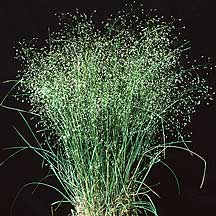
Oryzopsis is a genus of Chinese and North American plants in the grass family. Species from this genus are commonly called ricegrass.
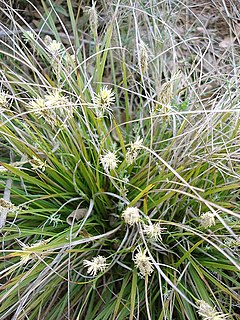
Carex is a vast genus of more than 2,000 species of grass-like plants in the family Cyperaceae, commonly known as sedges. Other members of the family Cyperaceae are also called sedges, however those of genus Carex may be called true sedges, and it is the most species-rich genus in the family. The study of Carex is known as caricology.
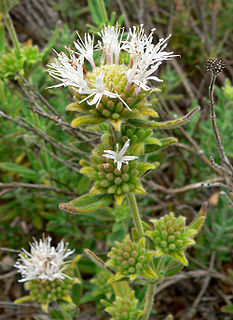
Monardella is a genus of approximately 40 species of annual and perennial plants native to western North America from British Columbia to northwestern Mexico. They are grown for their highly aromatic foliage, which in some species is used for herbal teas. The two-lipped, tubular flowers are formed in terminal clusters and are most usually red, pink, or purple.

Bouteloua is a genus of plants in the grass family. Members of the genus are commonly known as grama grass.
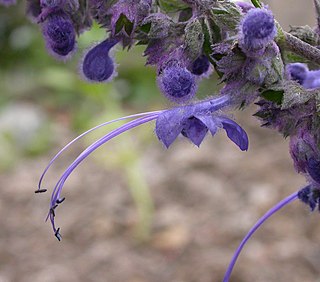
Trichostema is a genus of flowering plants in the family Lamiaceae, which are aromatic herbs or subshrubs. These plants are native to North America. Many plant of this genus which have whorls of small blue flowers are called by the common name bluecurls.

Viguiera is a genus of flowering plants in the sunflower family, Asteraceae. The name honours French physician L. G. Alexandre Viguier (1790–1867). It contains around 150 species, which are commonly known as goldeneyes and are native to the New World. These are herbs to bushy shrubs that bear yellow or orange daisy-like flowers.
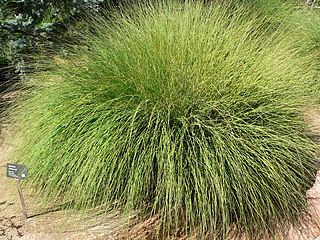
Muhlenbergia is a genus of plants in the grass family.
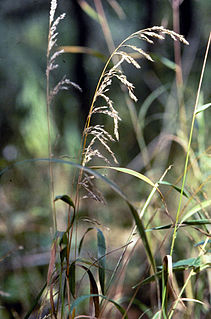
Cinna is a small genus of grasses known by the common name woodreeds. There are only four known species but they are quite widespread in the Americas and northern Eurasia.

Pogogyne is a small genus of flowering plants in the mint family known generally as mesamints or mesa mints. They are native to Oregon, Idaho, California, and Baja California.

Puccinellia is a genus of plants in the grass family, known as alkali grass or salt grass.

Enteropogon is a genus of tropical and subtropical plants in the grass family. It is widespread across many parts of Asia, Africa, Australia, the Americas, and various islands.

Raillardella is a genus of flowering plants in the tarweed tribe within the daisy family.

Pleuropogon californicus is a species of grass known by the common name annual semaphoregrass. It is endemic to northern California, where it grows in moist woodland and forest habitat, including redwood forests and nearby wetlands.
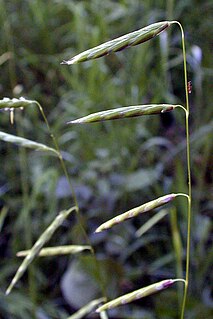
Pleuropogon hooverianus is a rare species of grass known by the common name North Coast semaphoregrass. It is endemic to northern California, where it is known from Mendocino, Marin, and Sonoma Counties. It grows in moist marshy areas and shady redwood forests. It is an erect perennial grass growing to a maximum height between one and 1.6 meters. The inflorescence bears widely spaced narrowly cylindrical spikelets which hang sideways off the stem, resembling semaphore signals. Each spikelet may be up to 4.5 centimeters long and may contain up to 16 flowers.
Pleuropogon refractus is a species of grass known by the common name nodding semaphoregrass. It is native to the west coast of North America from British Columbia to northern California, where it grows in moist meadows, marshy areas, and shady forests.
P. californicus may refer to:

Pleuropogon oregonus is a species of grass known by the common name Oregon semaphoregrass.

Bahiopsis is a genus of North American flowering plants in the sunflower tribe within the daisy family. It is native to the southwestern United States and northwestern Mexico, with several of the species endemic to the Baja California Peninsula.


















